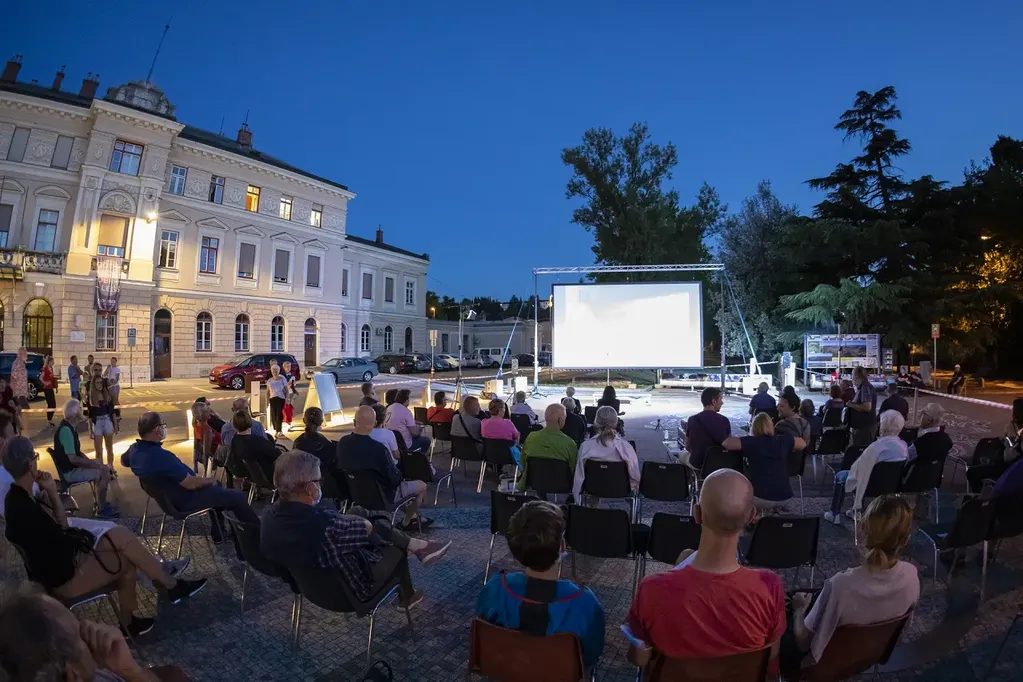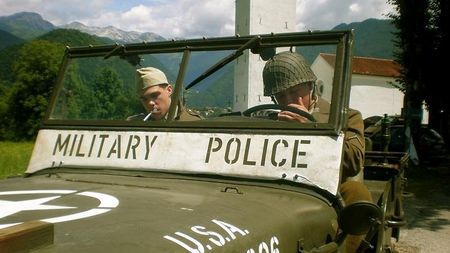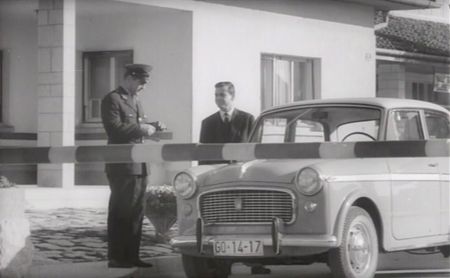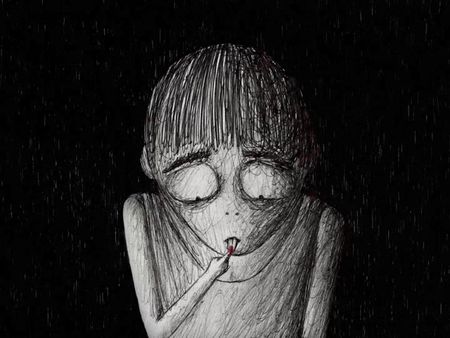Screening at Europe square, 18.7. at 21:00

On Tuesday, July 18, at 9 p.m. at the Europe Square / Piazza della Transalpina at the junction of Gorica and Nova Gorica, Kinoatelje is preparing a screening of three films dedicated to the border, history and people living on the Slovenian-Italian border. The program includes Jasna Hribernik's documentary film We Don’t Want White Bread (2009), which, through the accounts of living witnesses and young historians, talks about encounters with extravagance and democracy, about Coca-Cola and chewing gum, which together with jazz occupied the Soča Valley, about the time of austerity and harsh demonstrations for joining Yugoslavia.
Before that, the work of the Slovenian director Mako Sajko Where is the Iron Curtain? (1961) will come to life on the big screen, which describes life and friendly neighborly relations on and along the Yugoslav-Italian border in 1960, where the exchange of goods between the two countries takes place almost unhindered, in a humorous and light-hearted way, and the animated short film War of Words or Respectful Silence? (2020) by young director Leo Černic. The animated work was produced by Kinoatelje as a trailer for an educational project that we implemented in the 2020/2021 school year and taught young people about the turbulent past of the shared Slovenian-Italian cross-border area. In 2020, Černic received the award of the Society of Slovenian Animated Film - DSAF for his art design for his short film.
The projection is part of the program of the European Capital of Culture GO! 2025 and part of the multi-year project EAST—WEST The border in film and history, which explores life along the Slovenian-Italian border through moving images.
The films will be shown in the original language with Slovenian or Italian subtitles.
In case of rain, the screening will be moved to the Kinemax cinema in Gorica.
Tuesday, 18.7.2023
At 21:00
WE DON'T WANT WHITE BREAD
Jasna Hribernik, Slovenia, 2009, 57', slovenian and italian subtitles

After the end of the Second World War, the towns along the western Slovenian border were occupied by the allied army for two years. The border zone became known as Zone A. The Americans, the English, the New Zealanders, even the Indians managed the so-called Zone A of the Morgan Line from Trieste across the Karst to Predel, before the peace conference in London in February 1947 determined the true demarcation line between Italy and Yugoslavia. The documentary talks about encounters with extravagance and democracy, about Coca-Cola and chewing gum, which together with jazz occupied the Soča Valley, about the time of great prosperity, as well as fierce demonstrations for annexation to Yugoslavia, and through the accounts of living witnesses and young historians, it recreates that time at the end of the Second World War, when girls danced swing in the evening and wrote on the walls of houses at night: THEIRS WE DON’T WANT, OURS WE DON’T GIVE!
WHERE IS THE IRON CURTAIN?
Mako Sajko, Yugoslavia/Slovenia, 1961, 12', italian subtitles

The short documentary film by director and screenwriter Mako Sajko focuses on what happened on and along the Yugoslav-Italian border in the 1960s. It describes life and friendly neighborly relations in a border area where the exchange of goods between the two countries takes place almost unhindered in a humorous and light-hearted manner. The documentary dispels myths about the impenetrable and strict border between the then Eastern and Western blocs, which over the years has been called the "Iron Curtain".
WAR OF WORDS OR RESPECTFUL SILENCE?
Leo Černic, Slovenia/Italy, 2020, 2'

Announcements/
Cinema in Udine
07. 01. 2025To discuss the history of cine-club culture in Udine, one must start with Guido Galanti, who in 1930 founded Cine Club Udine—the third cine-club in Italy in chronological order. Alongside him, Renato Spinotti (Dante Spinotti’s uncle) must also be mentioned. In 1934, Cine Club produced the 16mm medium-length film Giornate di sole (Sunny Days), a comedy directed and performed by Galanti, with cinematography by Spinotti. The opening title card featured a hand-drawn depiction of the angel on Udine’s hill and the inscription “La Galanti Film presenta” (Galanti Film Presents). Author: Giorgio Placereani
Trieste – The World in One City
07. 01. 2025Today I will attempt to summarize the development of cinematic culture in Trieste. I will discuss some well-known facts, such as the favourable view of cinema held by Trieste’s writers and intellectuals, or the city’s role as a bridge between Western and Eastern cinema. However, I also want to highlight a less discussed aspect: the presence of women in Trieste’s cinematic culture over the years. Author: Paolo Lughi
Retrospective East/West
27. 11. 2024The East/West Retrospective is part of the official program for the European Capital of Culture GO! 2025. The project aims to reveal the rich cinematic heritage of the cross-border region between Slovenia and Italy to European audiences. The filmography of this region, which explores life along the Slovenian-Italian border, challenges the conventional perception of borders as mere divisions, instead portraying them as vibrant spaces of transition, exchange, and connection.

